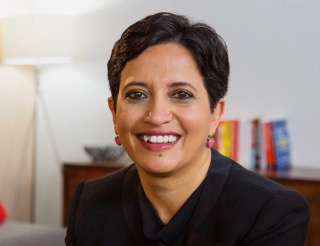Building a Venture Scale Enterprise AI Company from Spain: David Villalon, CEO of Maisa (Part 3)
Sramana Mitra: So, tell me exactly what happened. What did you have in the product when customers started asking, “How much”?
David Villalon: The main problem we had was that we’d built an engine we could personally make do anything. We could customize it for any customer, but that approach didn’t scale.
We realized we needed to automate ourselves within the product. We were the ones defining the instructions for the worker, and that was the core value. The breakthrough came when we enabled users to onboard a worker using natural language. The AI worker could ask clarifying questions about the task and build its own configuration — meaning the instructions and know-how were self-generated.
Users didn’t need to know anything about AI; they just answered the worker’s questions. The system would configure itself. That’s when customers stopped being confused and started understanding the value — it became easy to use.
Sramana Mitra: What kinds of customers started asking that question?
David Villalon: That’s when we began to identify our ideal customer profile. One mistake we noticed in the AI space is that people don’t buy “AI.” AI teams in companies usually prefer to build their own, and selling to them is hard because of internal egos.
When we shifted away from those buyers and focused on business users — people in finance, HR, or legal who had real problems — everything changed. We showed them they could automate their workflows without relying on technical teams. That’s when they started asking, “How much?”
Sramana Mitra: What were some of the first use cases?
David Villalon: One of the first was complex invoice processing.
We worked with a company that received thousands of invoices daily. It sounds simple — uploading invoices to a database — but it’s actually very complex. They’d often receive multiple invoices in one PDF and needed to extract and validate information: confirm vendors existed, verify transactions had occurred, cross-check databases, and then consolidate all invoice, vendor, and transaction data before uploading it.
Coding that manually was nearly impossible due to endless edge cases. Their existing RPA handled maybe 40% of it. We didn’t aim to replace RPA — they’re like horses, we’re like cars. We transformed the process using our digital workers, which handled it much more effectively. That was our first major success.
Sramana Mitra: And what kind of company brought you that use case?
David Villalon: It was an energy and infrastructure company in Europe processing thousands of invoices daily.
Sramana Mitra: In the US?
David Villalon: No, this one was in Europe. But we’re a US company operating from Spain, with a presence in the Bay Area as well.
We have a local advantage — we understand the European market deeply. This helps us learn quickly, and learning is essential because the market is still undiscovered. What we’re doing now wasn’t possible before, and others are only beginning to explore it. It’s a completely new space.
This segment is part 3 in the series : Building a Venture Scale Enterprise AI Company from Spain: David Villalon, CEO of Maisa
1 2 3
Featured Videos
Can 1M/1M Help Me Raise Money?
How Does 1M/1M Democratize Entrepreneurship Education?
How Does 1M/1M Democratize Management Consulting?
When Is The Right Time To Join 1M/1M?
Can 1M/1M Help Me With Business Development?
Can 1M/1M Help Me With Market Sizing?
Can 1M/1M Help Me Validate My Product?
Will I Have Private 1-on-1 Sessions In 1M/1M?
How Does 1M/1M Help Entrepreneurs Connect With Silicon Valley?
Mentoring or Consulting?
Why Does 1M/1M Charge $1000 a Year?
Why Does 1M/1M Partner With Local Organizations?
Why Don\’t Mentoring Networks Work?
Why Is It Important To Study With 1M/1M Now?
Dan Stewart Story
Vikrant Mathur Story
